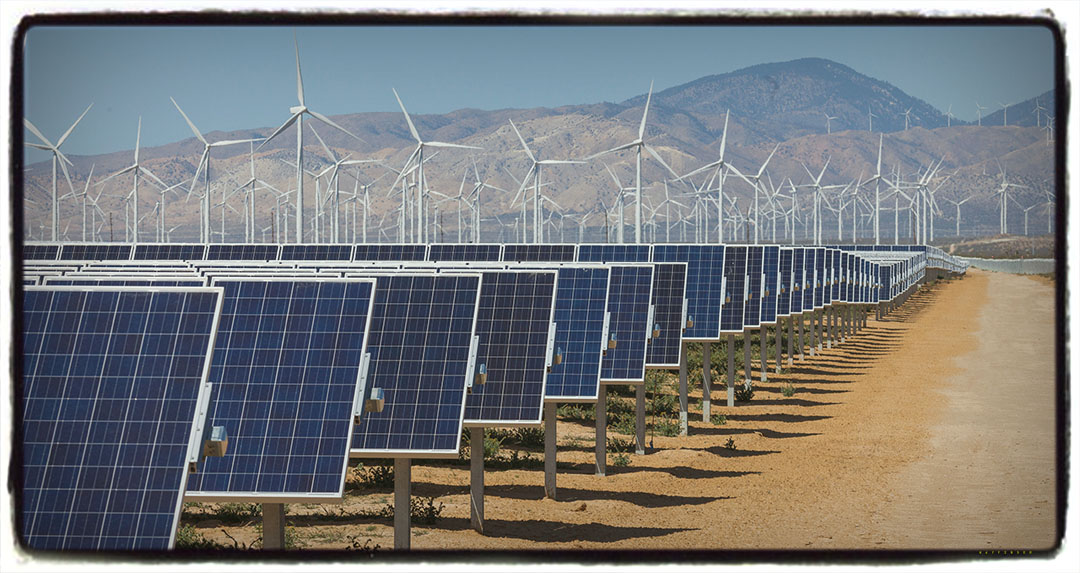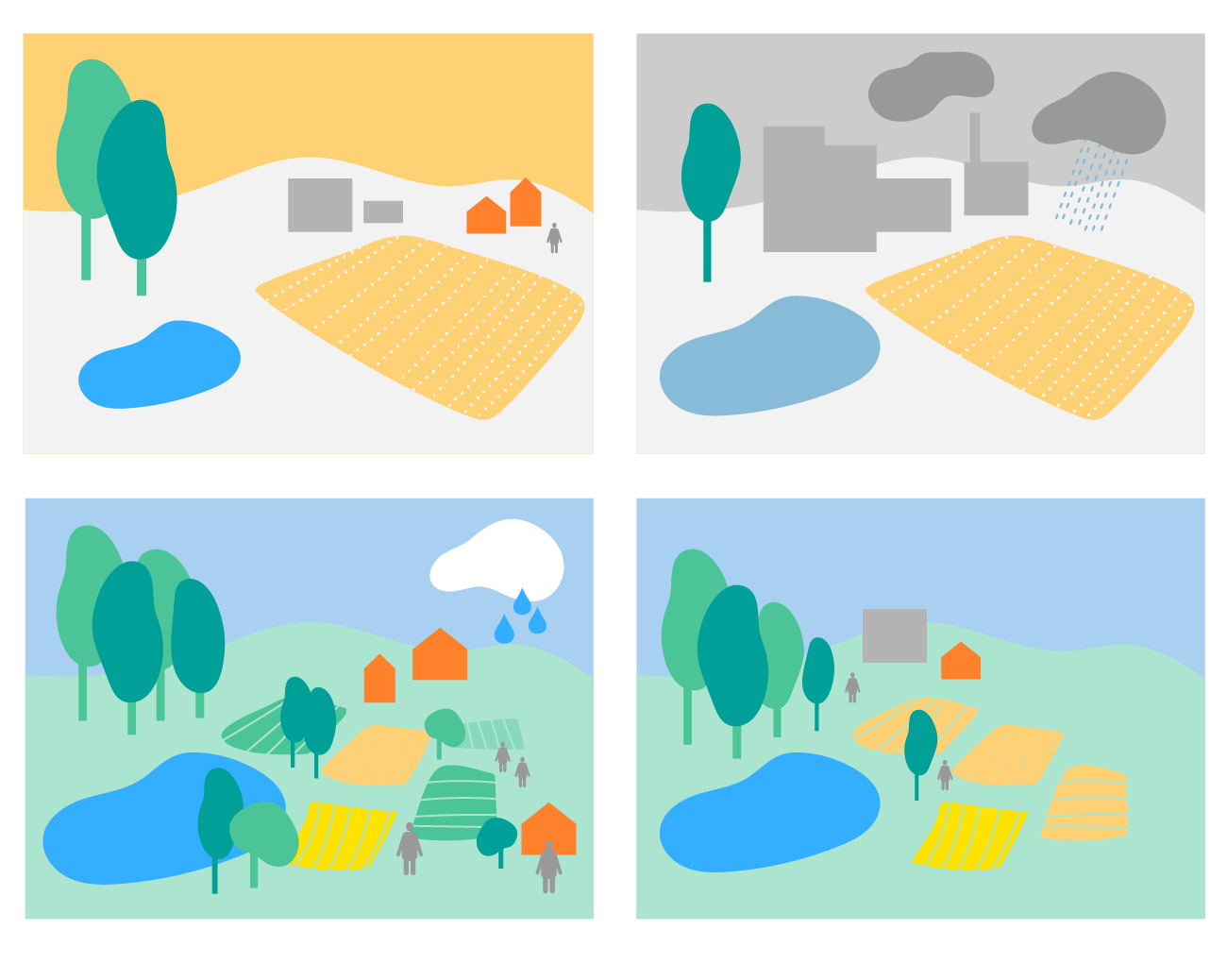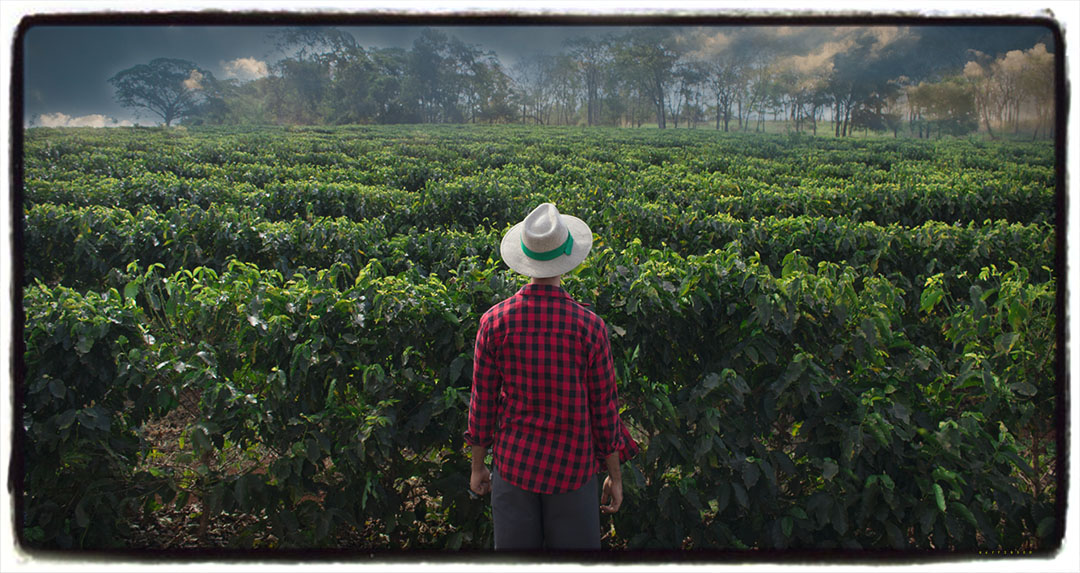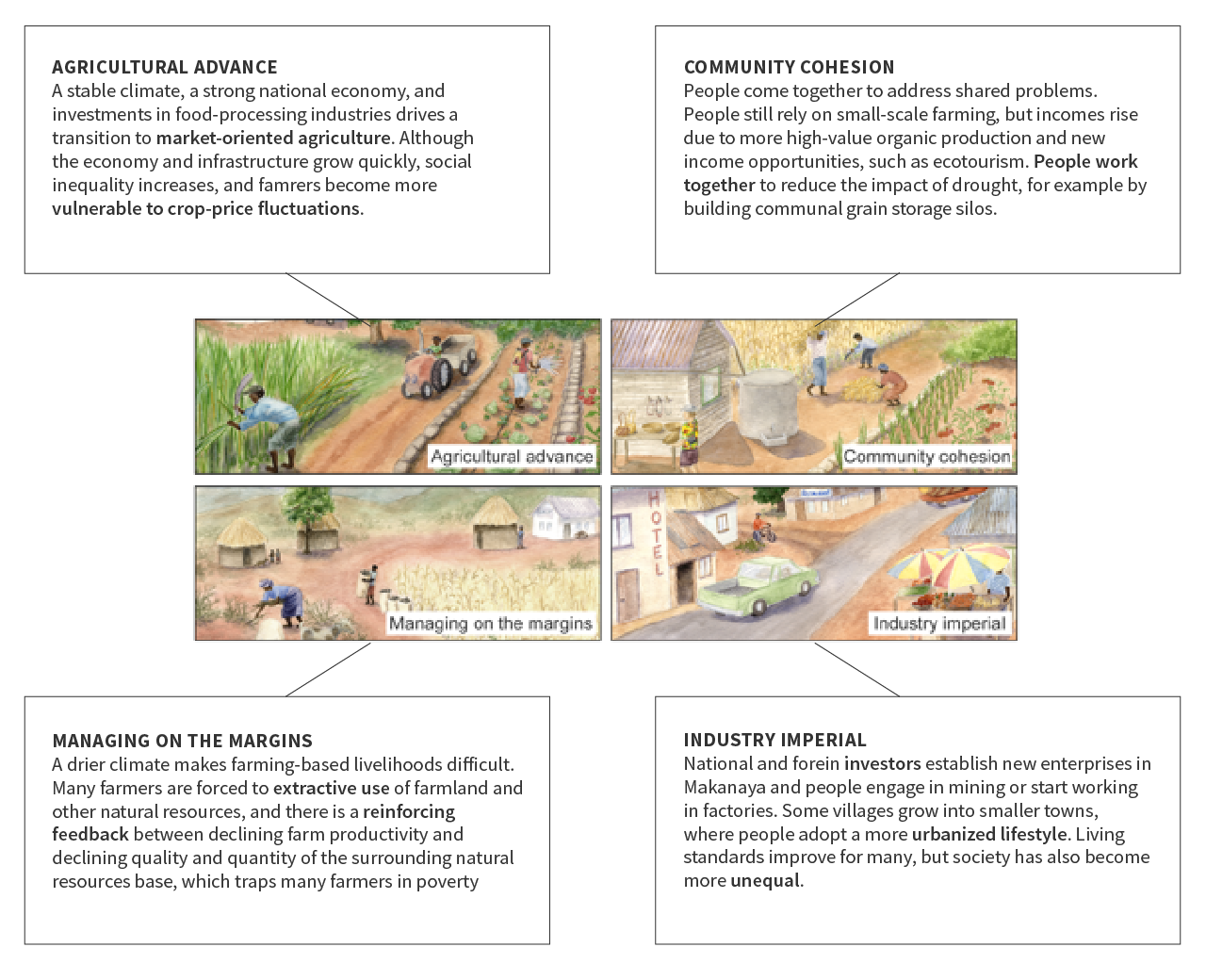Alternative plausible futures
Thinking about the future as a set of alternative possibilities helps us remember the inherent uncertainty of
the Anthropocene. Therefore, it is useful to spend some time on scenario development before moving into the problem-solving mode of Phase 4, where there is always a risk that people become blinded by their ideal visions about how the system “should develop”.

Photovoltaic power and wind turbines in the Mojave Desert, California, USA. Thinking about the future as a set of alternative scenarios helps us remember the inherent uncertainty of the Anthropocene. The purpose is to open up our thinking about multiple possible developments and how to make decisions when there is a high degree of uncertainty. Photo: N. Deshager/Azote.
It is important to remember that scenarios are not meant to be predictive. Rather, the purpose is to open up our thinking about multiple possible futures and how to make decisions when there is a high degree of uncertainty (figure 24.1). Depending on what the current trajectory looks like, and the emerging drivers of change, this might mean acting to prevent certain future developments and to actively move towards a new trajectory that better can fulfill the
aspirations among people the system. Thus, in addition to increasing the general robustness of your strategies, scenario planning may also help you identify critical decision points in time, where actions may need to be taken to avoid crossing a threshold in the system or where you may take advantage of new opportunities that present themselves.
Scenario planning
Scenario planning is a rapidly growing field of practice, and there are many different methodologies to choose from. Scenario planning can be time consuming, but if the purpose primarily is to open up your thinking about the future, as is the case here, it doesn’t have to be. A good way to start a “light-pass” scenario exercise is to list and rank important drivers for change. The next step is to think creatively about how different combinations of these drivers (e.g. ++, +-, –, -+) might impact the system in the future. The attached case from the Makanya catchment in Tanzania, shows how this type of scenario planning approach helped thinking creatively about the future of smallholder farming and increasing the robustness of
interventions made in agricultural water management.

Figure 24.1 Scenarios can be used to explore some of the plausible futures of a
social-ecological system. This stylized representation reflects four potential futures of a farming system. The goal of using alternative scenarios is not prediction, but rather to engage with the range of uncertainties that exist about the future. Illustration: E.Wikander/Azote
In some cases, it might be worthwhile to conduct a more in-depth scenario exercise and some research might then be needed to determine the most suitable approach to use for your system and in your context with the time, capacity and resources you have available. Scenario planning can be combined with emerging tools such as
adaptation pathways to map out the possible future trajectories of the system and how they may intersect at critical points in the future.
The attached discussion guide lists a set of questions that cut across different scenario planning methods and can be used to stimulate thinking on how to integrate the scenarios you develop with your evolving system understanding, the change narrative that you have started working on, and the action strategies that you will be working on soon in Phase 4.
Click here to learn more about working with the future by Tanja Hitchert, Research Associate at the Centre for
Complex Systems in Transition at Stellenbosch University
Click here to learn about the seeds of a good Anthropocene by Laura Pereira, Researcher Associate at the Centre for Complex Systems in Transitions at Stellenbosch University




